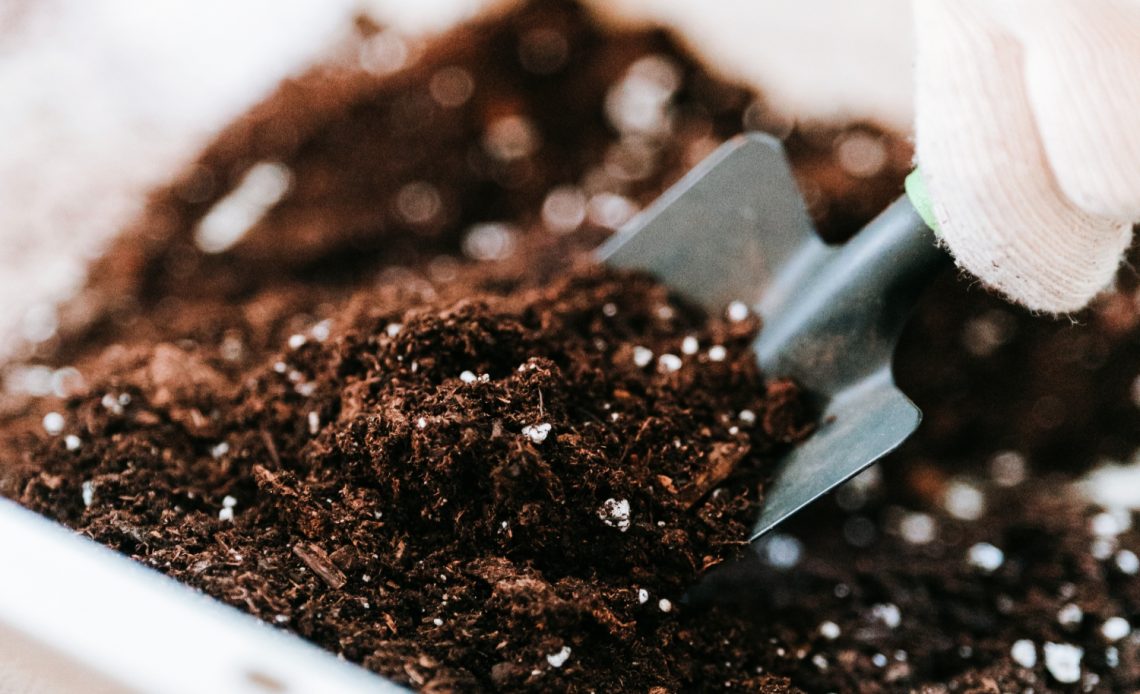

We’re here to help! Wild Yards is a completely free website that is 100% dedicated to helping you create a wildlife-friendly, sustainable yard. Read more
WildYards is reader-supported. When you buy a product through a link on our site, we may earn a comission. Every product is independently selected by our (obsessive) editors and our reviews are unbiased and objective. Read more about our mission or our privacy policy.
You step into your potting shed, ready to re-pot some new hydrangeas that you picked up from your local nursery.
But when you open up your bag of potting soil, you notice that it’s covered in white fuzzy mold.
It’s not unusual for prepackaged potting soil mixes to get moldy over time especially when they’re stored outside in a humid environment.
Most soil mixes are sold in plastic bags that trap condensation as the temperatures rise and fall throughout the day.
Because the bags they’re stored in collect moisture, mold spores thrive in potting soil mixes.
The question is, is it safe to use moldy potting soil to repot your plants? Or should you toss the moldy stuff out and purchase a new bag?
Moldy potting soil is generally safe to use and poses no real threat to your plants. You should, however, wear a mask, goggles, and gloves when handling the mixture to avoid breathing in any spores or getting them on your skin.
How can you tell if your potting soil is moldy?
Mold in potting soil is usually pretty easy to spot, especially if the potting soil has been sitting untouched for a while.
When you open up the bag, you’ll see white, yellow, brown, or black spots here and there. The mold spots are typically dull, dusty, and fuzzy, much different in texture than the surrounding soil.
The mold may be transparent and hairy and resemble spider webs. Or, it may be thick and patchy, like lichen on tree bark.
In some cases, the mold may cover every inch of the exposed soil.
In most cases, the mold found in bagged potting soil is caused by Saprophytic fungi, including Mucor, Penicillium sp., Trichoderma sp., and Aspergillus sp.
This type of mold feeds on decaying organic materials and actually breaks the materials down and makes them easier for plants to absorb.
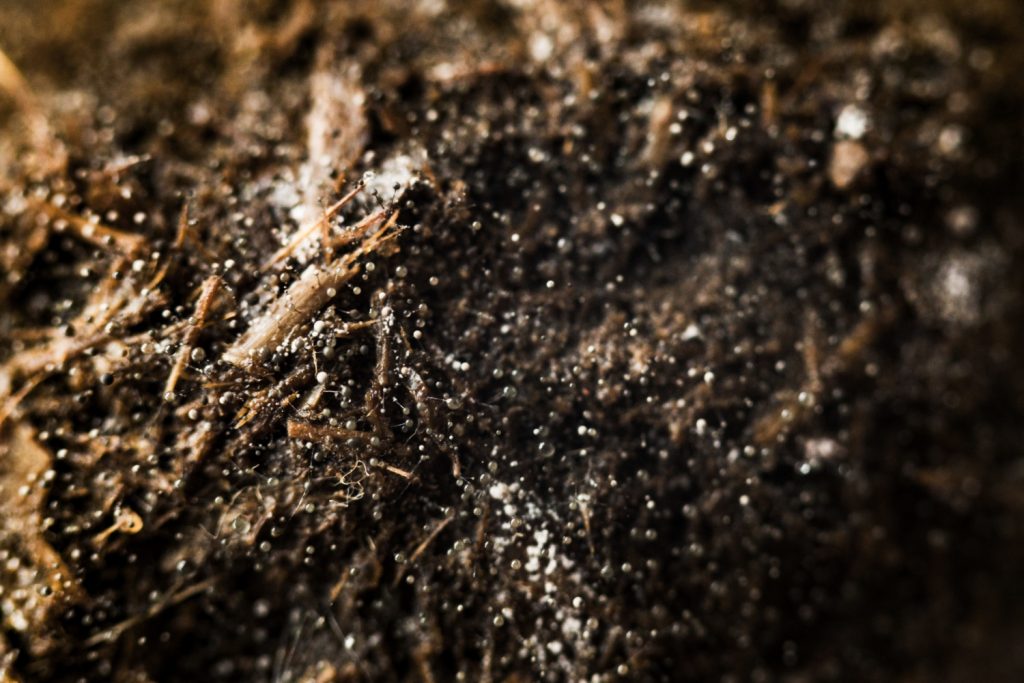
Why does potting soil get moldy?
It’s not unusual for potting soil mixtures to get moldy after they’ve been opened.
Sometimes even when you open up a brand-new bag of potting soil, you find patches of mold.
Because potting mixes are stored in plastic bags that easily collect condensation, the soil stays moist, creating prime growing conditions for all sorts of molds.
Most potting soils are loamy and amended with a moderate amount of decaying organic materials to help them retain moisture.
Because these soils hold onto some water naturally, that also sets them up for developing mold.
If you keep your potting soil mixture in a dark, humid place, like in a garage or shed, this makes them more prone to developing mold as well.
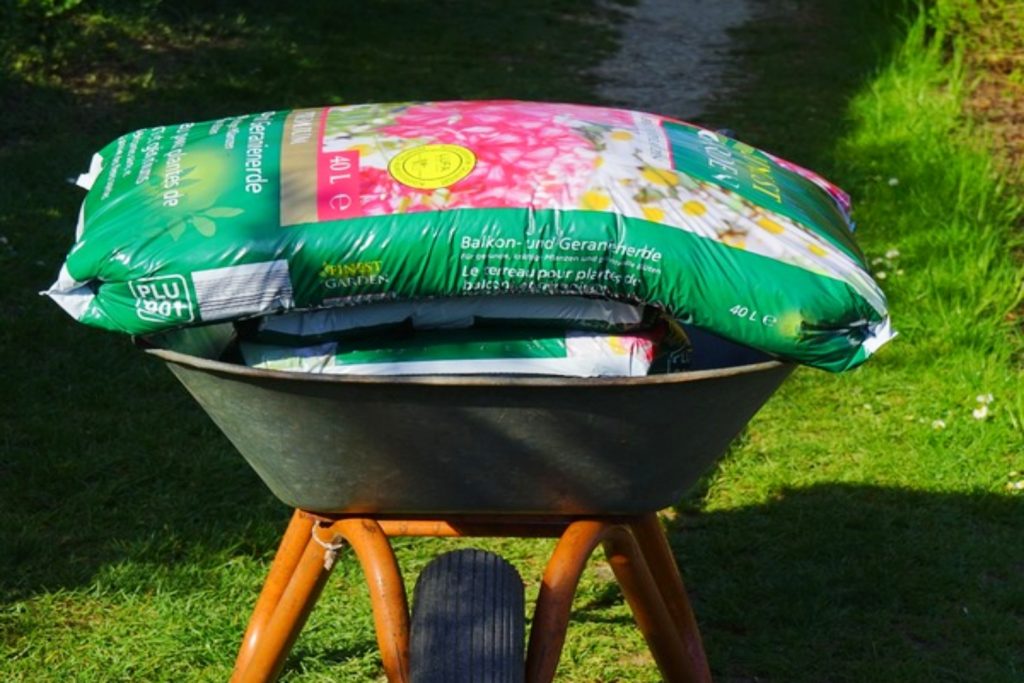
What does mold need to grow?
Soils are naturally rich in a variety of bacterial and fungal spores that can lie dormant for years, waiting for ideal conditions to grow.
Most potting soil mixtures contain a variety of organic materials, like bat guano, manure, worm castings, and peat moss.
These materials create nutrient-rich hummus that provides mold with the perfect food source.
Plants rely on photosynthesis to produce energy for themselves. But molds do not.
Instead, they utilize a process called heterotrophy, which involves secreting hydrolytic enzymes to degrade cellulose and other plant materials into simple sugars that are easy for the mold to absorb.
This means that molds do not require sunlight to grow. But they do need plenty of moisture and mild temperatures.
Because potting soil is often stored in shady, humid areas, the soil itself stays damp and cool and away from sunlight, creating the perfect breeding ground for mold spores.
Is moldy potting soil dangerous to people?
The molds found in potting soils generally aren’t dangerous to people.
However, they can be irritating to your skin and sinuses and lead to coughing, sneezing, a stuffy nose, and itchy, watery, bloodshot eyes.
This is especially true if you tend to suffer from seasonal rhinitis or have a history of mold allergies.
If you have an overactive immune system, then you should certainly take a few extra precautions when handling moldy potting soil.
And, even if you don’t have an overactive immune system, we still recommend wearing long sleeves, gloves, safety goggles, and a mask when dealing with moldy potting soil.
Be sure to handle the potting soil in a well-ventilated area, but avoid stirring it up on a windy day so it doesn’t blow all over your skin and into your face.
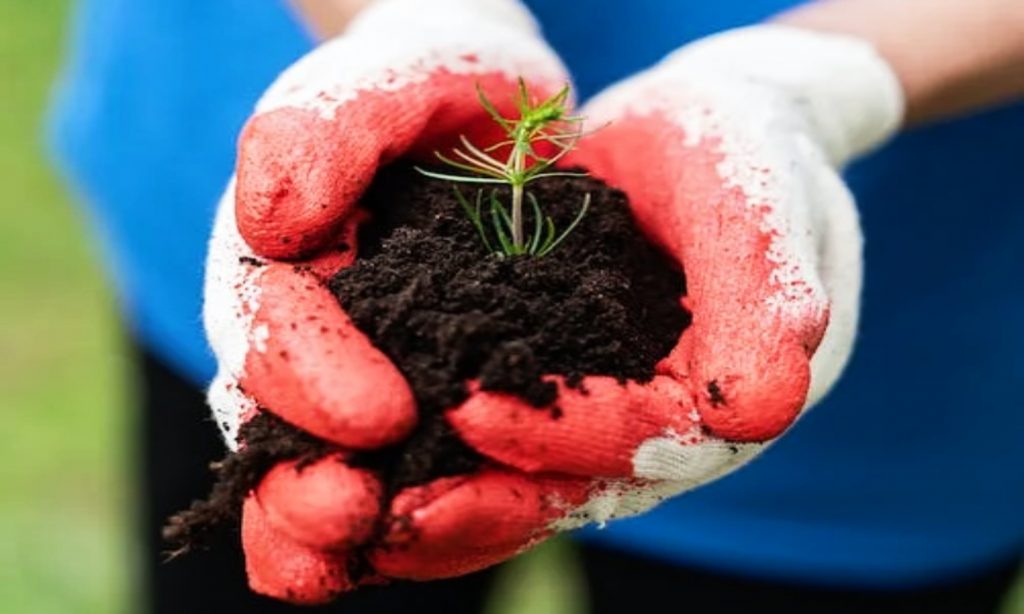
Is moldy potting soil dangerous to plants?
No, not at all. Mold is sometimes a sign of an underlying problem, but it isn’t necessarily a problem in and of itself.
See, soils, especially ones that are rich in decaying organic matter like most potting soil mixtures, naturally contain mold spores.
The spores are always there, even if they aren’t growing and you can’t see them.
It’s just that when conditions are right, the spores begin to “germinate”.
But just because the spores have turned into mold, that doesn’t mean that they’re any more dangerous than they were before.
That said, mold is usually an indication that the soil is retaining too much moisture and has poor drainage.
While small mold spots aren’t likely to harm your plants, allowing huge patches of mold to continue growing in your potted plants can rob them of the valuable nutrients they need to stay healthy.
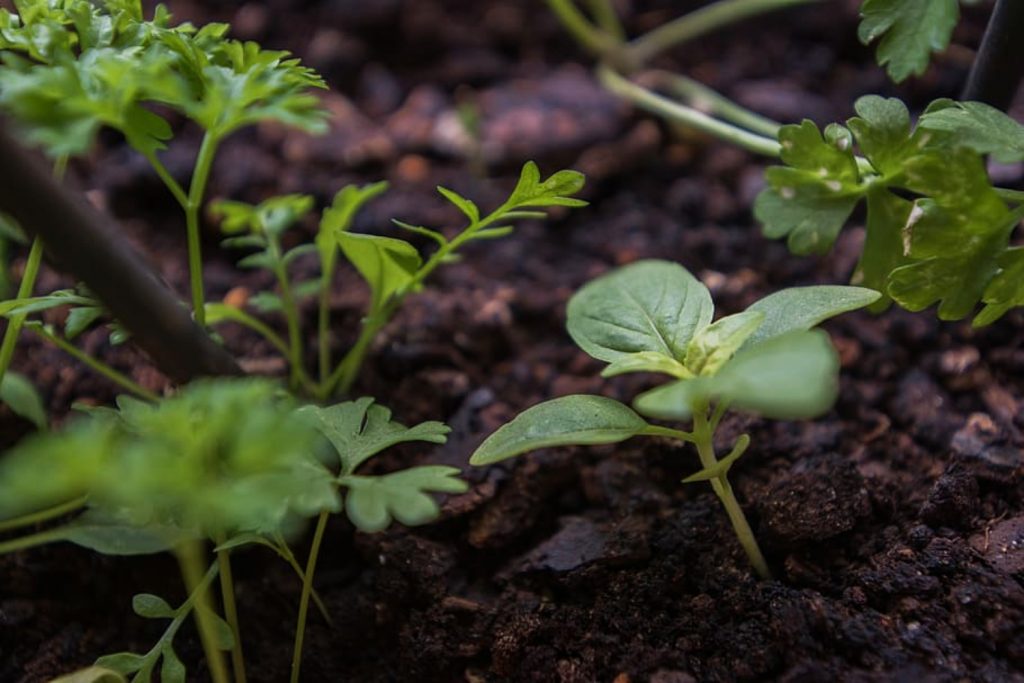
Is moldy soil actually good for your plants?
The next time you go on a hike through the woods, take some time to examine the soil. If you brush the leaves aside, you’ll likely find some patches of brown, white, or yellow mold growing on the forest floor.
Molds are a fact of life for all plants. Although they can be unsightly, even alarming at first, in most cases they are not harmful.
In fact, they can be highly beneficial!
Molds play an important role in the ecosystem and often have a symbiotic relationship with plants. Like mushrooms, molds use special enzymes to break down plant matter into easy-to-absorb nutrients.
But molds don’t just break down decaying materials for themselves. They make it easier for plants to absorb nutrients, too.
While you certainly don’t want to let mold grow out of control, a few patches of mold here and there are good signs that your soil is retaining moisture and decaying nicely to provide your plants with an ample source of nutrition.
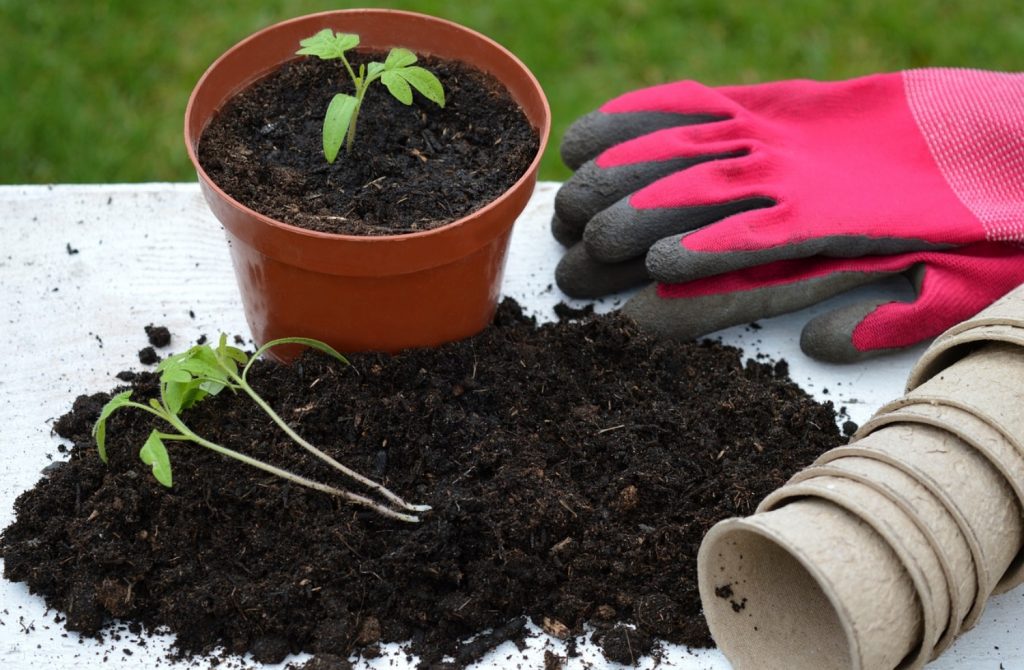
Can mold spread to other plants?
Mold reproduces via spores. Those spores are invisible to the naked eye and can be carried on the wind to new soils, potentially infecting other plants.
While most molds pose no threat to your plants, some of them do.
Rhizoctonia solani, for instance, is a fairly common soil mold that can contribute to diseases in nearly all types of plants.
Rhizoctonia solani can lead to damping off, root rot, stem rot, and leaf blight.
It’s nearly impossible to eradicate the spores of this mold, or any other, for that matter.
However, you can prevent this mold from developing by improving soil drainage, supporting good air circulation, and avoiding overwatering your plants.
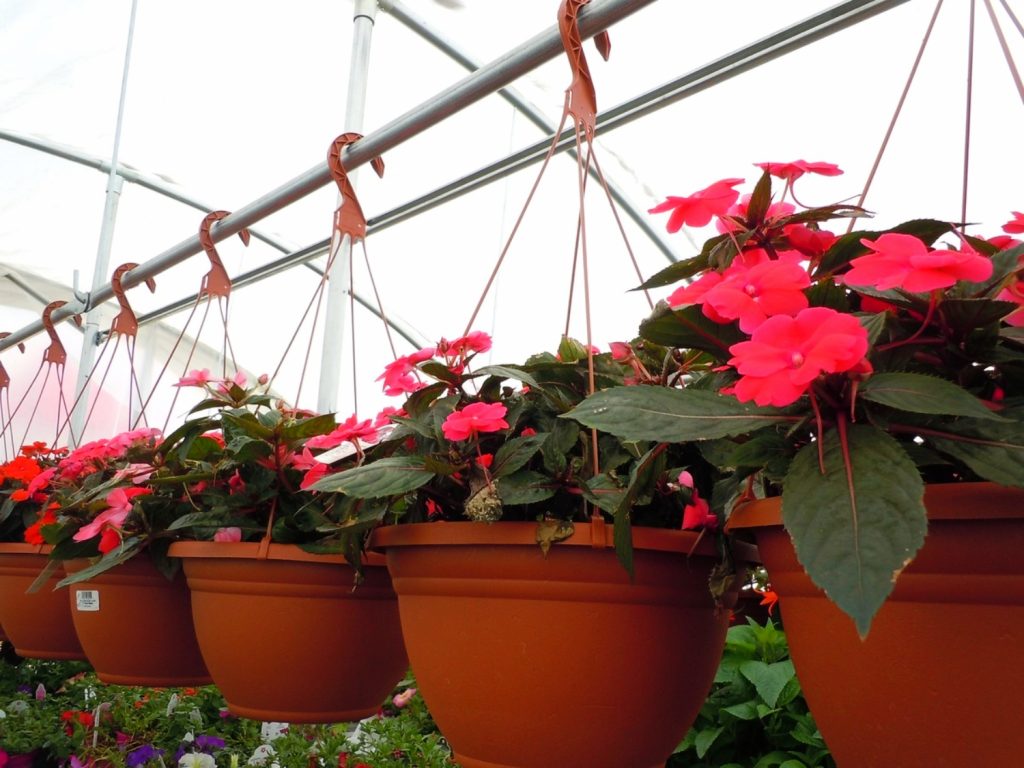
Should you discard a bag of potting soil if it’s totally covered in mold?
Truth be told the mold you find in your potting soil doesn’t pose much threat to the plants in your hanging baskets or containers.
So there’s no need to toss out your moldy potting soil and purchase new bags.
Of course, if you’d prefer to use potting soil that isn’t moldy, you can always add the moldy bags to your compost heap and use new stuff instead.
In many cases, you can remove the mold by scraping the uppermost layer of topsoil out of the bag.
Since mold is a sign of excessive moisture, consider adding some horticultural sand to the potting soil before using it for your plants. This supports good drainage.
Adding a handful of compost to the mix is also beneficial, as this helps replace some of the nutrients the mold used up.
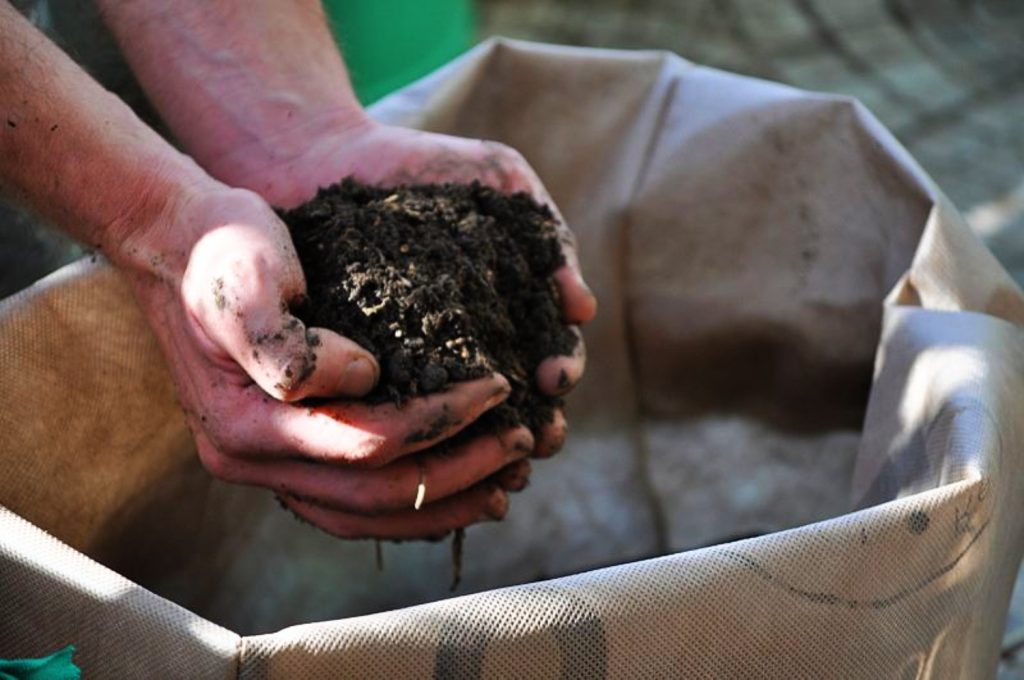
Can you kill the mold in your potting soil before using it?
The only way to truly neutralize mold spores and kill mold growing in your potting soil is to heat the mixture at a high temperature.
For example, you could spread the potting mixture out on a level surface and scorch it with a weed torch.
Even spreading out the potting soil and exposing it to the sunlight can kill growing mold, although this method may not be strong enough to kill all of the mold spores.
But heating the soil doesn’t just kill bacterial and fungal pathogens. It also kills any beneficial insect and/or spider eggs that may be hiding in the soil.
Because certain insects, like ladybugs, have a symbiotic relationship with plants, sterilizing the soil and killing off their eggs is not recommended.
Besides, the moment the sterilized soil comes into contact with air, plants, or soil amendments like manure, it instantly becomes desterilized again.
It’s also worth noting that heating potting soil alters the soil’s properties and can deplete the nutrients plants need to thrive.
If you do choose to heat the soil to kill the mold, you’ll need to add compost to the mix before using it to pot plants to replace lost vitamins and minerals like nitrogen, phosphorus, and potassium.
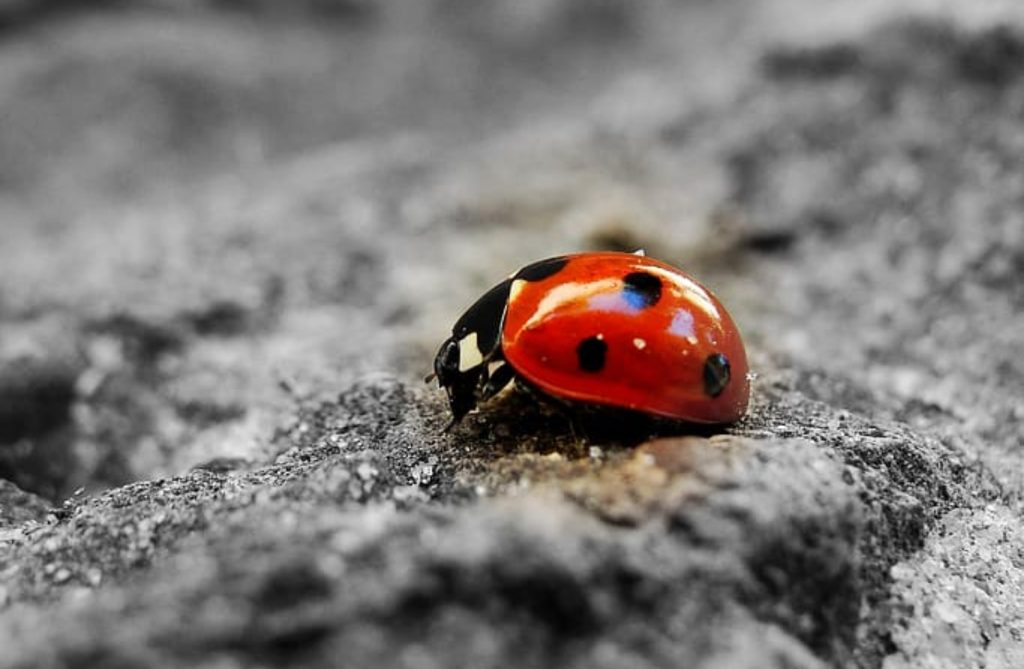
How can you treat mold growing in the soil of potted plants?
If you’re finding mold in your potted plants, take it as a sign that it is retaining too much moisture.
In some cases, all you need to do to correct the problem is scrape the mold away from the plant and move it to a well-ventilated area. Improving air circulation will help keep the soil drier and prevent mold from growing.
But if that doesn’t help, then you’ll need to remove the plant, clean the pot, and amend the soil.
Gently remove the plant from the container, and scrape all of the dirt out. Rinse and scrub the pot, then allow it to dry in a hot, sunny location to kill off any remaining pathogens.
Use this opportunity to drill drainage holes into the bottom of the pot, if necessary.
Once the pot is nice and clean, it’s time to fill it with new soil. Use a mixture of potting soil and sand or perlite to improve drainage.
Adding a few large rocks to the bottom of the pot can also help by preventing the drainage holes from getting clogged up.
When you’ve repotted your plant, water it well, and check the moisture level daily.
If the soil feels damp an inch below the surface, wait until it dries out more before watering again. This will help prevent mold from developing.
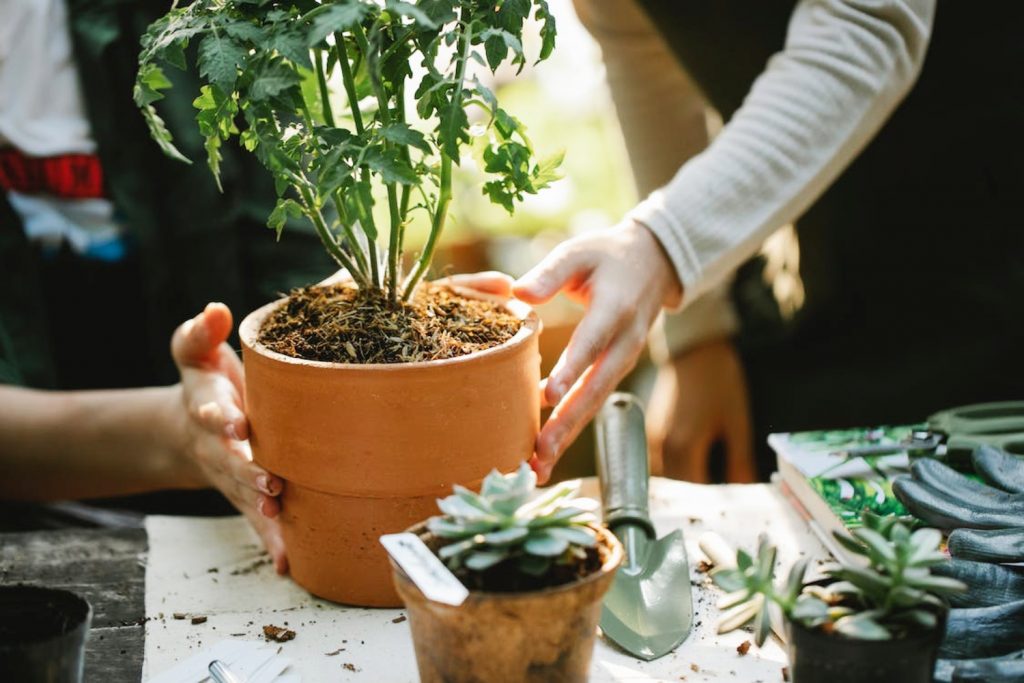
How can you prevent moldy potting soil?
One of the easiest ways to prevent moldy potting soil is to only purchase the soil as necessary.
By determining how much potting soil you’ll need to fill your pots or raised beds ahead of time, you can avoid purchasing excess and, therefore, eliminate the need to store it.
Of course, this isn’t always an option.
If you frequently propagate your plants, and you need a steady supply of potting soil on hand at all times, you’ll need to adjust the way you store your soil mix to prevent it from getting moldy.
Instead of keeping potting soil in plastic bags, pour it into an airtight plastic container and store it in a cool, dry, brightly lit area.
Burlap sacks also work well for storing potting mixtures because they breathe and can keep the soil dry.
Storing the potting soil up off of the ground prevents moisture from accumulating on the bottom, further improving air circulation.
More tips for managing moldy potting soil
In addition to improving drainage and air circulation, and storing your potting soil properly, there are a few other things you can do to manage moldy potting soil.
Most importantly, you’ll need to sterilize your gardening tools.
Use a solution of one-part bleach and nine parts water to clean your trowels, weed forks, and spades after using them in moldy soils.
Avoiding overcrowding plants, and ensuring adequate sunlight and good air circulation around them will help as well.
By taking a few extra precautions, you can prevent mold from taking over your potting soil and keep your plants healthy and growing great.
